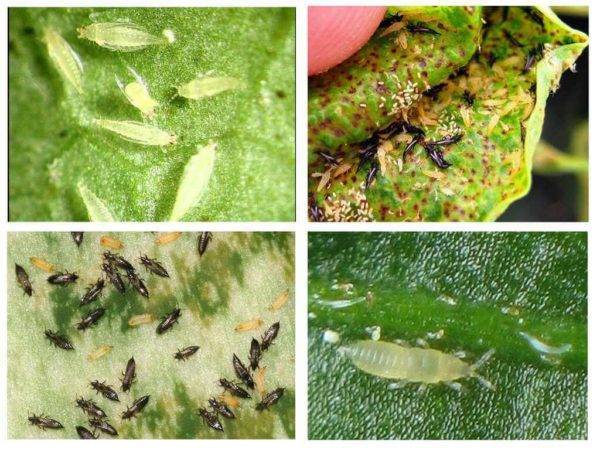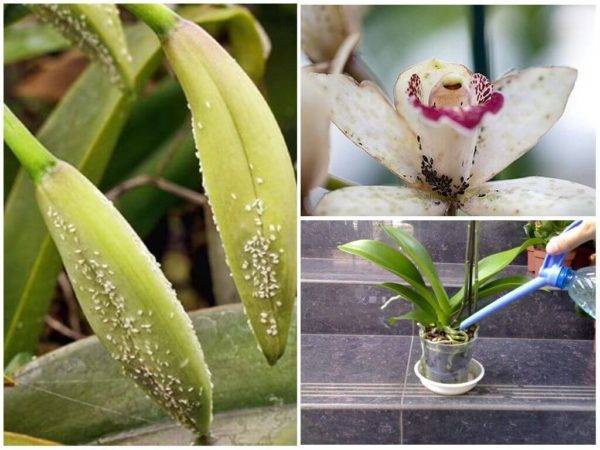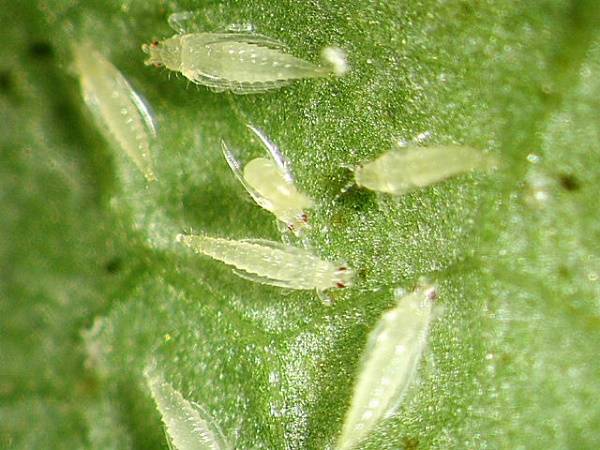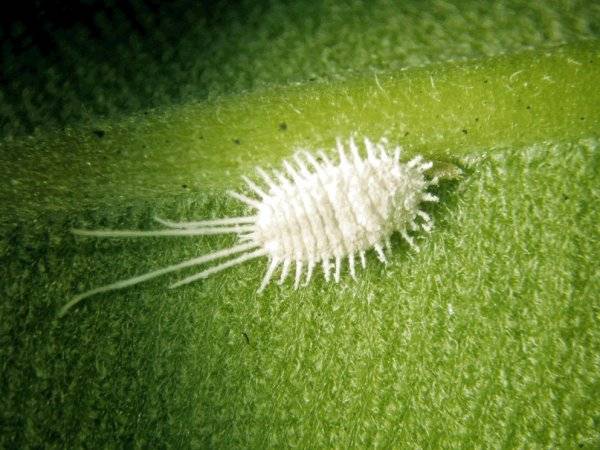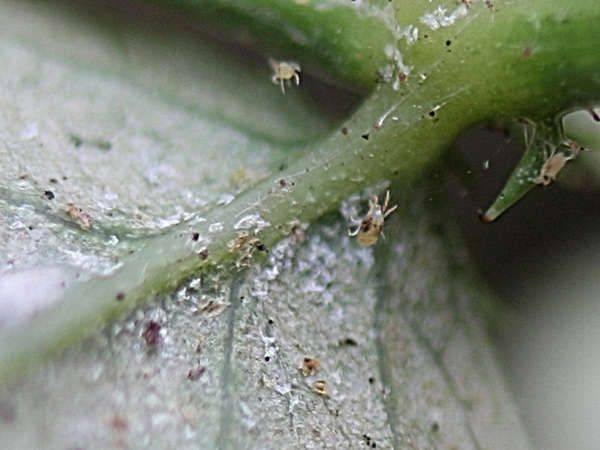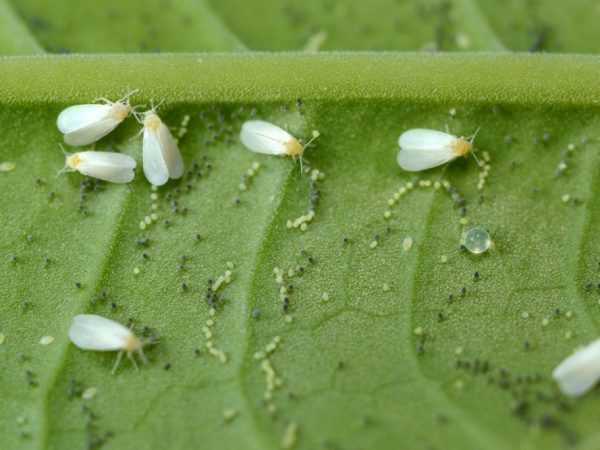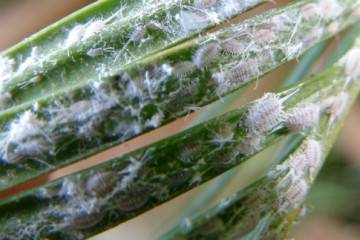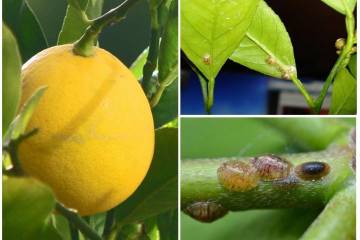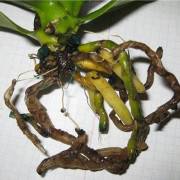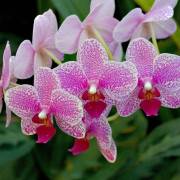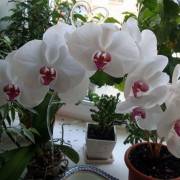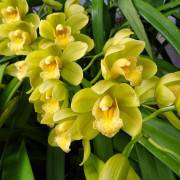Orchid pests - why they appear and how to fight
Content:
Orchids are capricious plants that require careful maintenance. In addition to common diseases, they are often attacked by parasites that can cause serious damage to the flower. Without timely action, orchid pests can destroy the flower.
The reasons for the appearance of parasites
The reasons for the colonization of pests on an orchid include the following factors:
- the acquisition of a known sick flower. During the purchase, you must carefully inspect the plants, examining all parts. Ticks can be located both on the inner and outer sides, in the axils of leaves, soil mixture. If you suspect their presence, it is better to refuse to purchase;
- infected substrate. Newcomers to floriculture often ignore the recommendations for planting plants in ready-made soil mixtures from stores. The land dug up on a personal plot or forest-park strip becomes a breeding ground for diseases and pests;
- infestation from neighboring flowers. When the plants are crowded on the windowsill, the pests easily move from one pot to the second. They cannot fly, but some species jump well. If a favorable environment for the life of bugs develops in one container, then after the destruction of the first flower they are taken for the next.
Shields
They are fixed on leaf plates, resemble small tubercles. After maturation, the larva turns brown. Adults and developing individuals feed on plant sap, secreting mucus. The latter becomes a favorable environment for the development of fungal infections.
Aphid
Refers to the common types of parasitic individuals. Aphids on orchids can be yellow, black, white, pink. The body of the aphid is oblong, half transparent, the maximum length of an adult is 2.5 mm.
Representatives live in the lower parts of the foliage, feed on plant sap. During the reproduction of aphids, the upper part of the flower is deformed, the plates are covered with yellowish spots. After a while, they wither and curl.
Thrips
Small pests with a body length of 2.5 mm, which outwardly resemble rice grains. The wings are blackish or brownish. The appearance of unexpected guests is determined by white spots on the foliage, covered with a thin silvery film. Confirming guesses is best done at night. By illuminating the substrate with a flashlight, you can see thrips on its surface.
Schervets
The appearance of a mealybug on an orchid is determined by miniature individuals covered with a whitish bloom. He has a slender and elongated body with antennae. Pests prefer to be located in the axils of the foliage - the junction of the petiole with the stem.
Parasites feed on juice, bite through each leaf. The waste products of the worms resemble scattered flour or fluffy shreds of cotton wool. The female lays eggs on the seamy side, the hatched larvae feed on the sap of the flower, like the parents.
How to get rid of white hairy bugs that have appeared on an orchid? The green part is wiped with alcohol tincture, the damaged leaves are cut off. The flower will look ugly after pruning, but after a while it will again release healthy foliage.
Mites
There are several types of mites that infest the orchid.
Armored
A tiny pest with a maximum size of 1 mm. The color of the body helps it disguise itself as sand, even the eggs of the pest are painted in a characteristic brownish color. The tick does not tolerate bright light, prefers to sit in dark places. After dark it begins to move throughout the plant.
Eggs are laid on fallen leaves or near rotten roots. The favorable conditions for its habitat include a constantly moist substrate.
Spiderweb
Differs in a variety of colors: representatives of the species can be gray, sandy, white. The size of an adult does not exceed 0.3 mm. The body is covered with small stripes. These varieties are not afraid of the sun's rays, so at any time of the day they slowly move around the flower.
You can identify a tick on an orchid by the silvery cobweb that covers the plant. White bugs on orchids lay eggs during flowering.
Bulbous
Its body is distinguished by an unusual structure: the narrowed end gradually widens into a wide oval. The common color is white, sometimes there are individuals with a cream or red tint. The maximum size of the pest is 1.5-1.6 mm. The tick has two pairs of legs, it feeds on juice from the root system of orchids, through independently punctured holes. Doesn't weave a web on orchids.
Mushroom gnats
Over-watering attracts mushroom gnats that live in the sand. If uninvited tenants appeared on the orchids, it means that the rest of the indoor plants were also infected. Sexually mature individuals of mushroom mosquitoes resemble ordinary mosquitoes of minimum size with a blackish color.
Legs
They have an oval, fusiform body and good jumping ability. They appear in permanently wet soil, painted in gray and brownish colors. With excessive soil moisture, podura (the second name of the parasite) multiply rapidly and willingly feed on rotting flower roots.
What if there are midges in the orchid? Reducing the frequency of watering to 1 time per month will help get rid of the problem.
Other parasites
Other common insect pests include:
- whitefly. Under its influence, the plant becomes weak and dries up quickly. Signs of an attack include yellowing of the foliage and its gradual drying. Whitefly larvae live in the roots and on the back of the leaf blades;
- nematodes. These are miniature worms up to 2 mm in length. Depending on the variety, pests settle in leaves or substrate.
Prevention and control measures
In order not to bring insects into the house or to bring out a minimal colony, you must take precautions:
- carefully examine the plant at the stage of purchase. Getting rid of intruders is more difficult than immediately abandoning the purchase of an infected plant;
- do not put a new copy next to home flowers. It is necessary to quarantine him within 1-2 weeks;
- the orchid is immersed in water for 15 minutes. Thus, all bugs and ticks present will be detected;
- wipe the leaves and buds with a solution of laundry soap, and then single copies of ticks will be destroyed.
Phytoverm is used for prophylaxis. In the absence of pests, the plant is sent to the rest and proceeds to standard care. Experienced florists advise:
- how and how to deal with aphids on orchids at home - entobacterin, acarin, confidor, actara, ktellik or karbofos;
- anti-mite, neoron, omite and fufanon remove ticks.
If you have a mealybug on an orchid, how to get rid of it:
- The affected plant is quarantined away from other flowers.
- Flowers and closed buds are carefully trimmed, as there is no cure that preserves the original appearance.
- The foliage is treated with a cotton pad soaked in a chemical or soap solution, special attention is paid to hard-to-reach areas. You need to process each leaf and stem.
- The place where the container with the diseased plant stood is disinfected.
- Orchids are re-treated with a chemical solution: sprayed up to 4 times, observing an interval of 10 days.
If white bugs on the orchid have affected the root system, then additional procedures are carried out:
- transplanted into a new container with a clean substrate;
- the root system is disinfected during transplantation.
If the flower is infected superficially, then the infected parts are removed and the plant is transplanted into another container. This is the only way to save the culture affected by the mealybug.
Traditional recipes for treatment and prevention
A small number of flower pests are destroyed by decoctions and infusions. The following are used as medicinal plants:
- pharmacy chamomile;
- yarrow;
- nettle;
- citrus fruit peels.
Prepared raw materials are poured with boiling water and kept for a day. Plants affected by bugs are sprayed through a spray bottle.
Common recipes include:
- a mixture of water and olive oil, taken in the proportion of 2 tbsp. spoons for 1 liter of water. The finished solution is applied to the foliage with an ordinary brush;
- onion. One head is crushed to the state of gruel and poured with fresh boiling water, kept for 7 hours, filtered and the diseased flower is sprayed with the finished infusion. Processing is carried out several times a day for 3-4 days.
Some gardeners recommend using cyclamen decoctions. The tubers are cut and boiled for at least half an hour, set aside for 24 hours. After filtration, the affected plant is sprayed with a solution. Disinfection is carried out several times a day, then a break of five days is observed and the procedure is repeated.
Hot baths are also referred to as folk methods. The box with the plant is sent to water heated to 40 ° C and kept there for 5-10 minutes. The procedure requires extreme caution, as excessively hot water can cause the death of the flower.
The war against pests requires attention, adherence to the rules for the use of chemical compounds and the timely identification of the first symptoms of aphid and tick attack. In most cases, the cause of a decrease in the level of plant immunity is a violation of the rules of care and excessive moisture in the soil.To avoid the development of rot, it is necessary to wait until the earthen coma is almost completely dry and only then watering is carried out.
